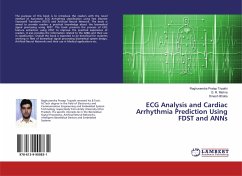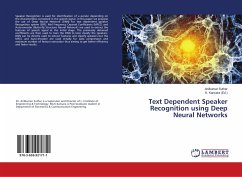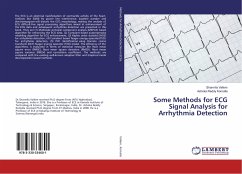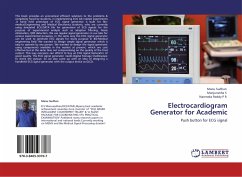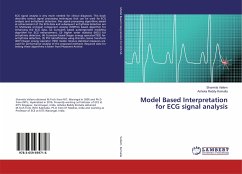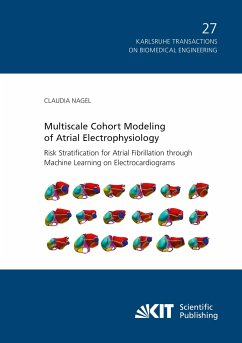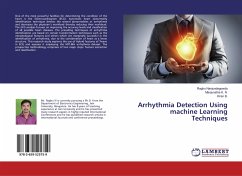
Arrhythmia Detection Using machine Learning Techniques
Versandkostenfrei!
Versandfertig in 6-10 Tagen
36,99 €
inkl. MwSt.

PAYBACK Punkte
18 °P sammeln!
One of the most powerful facilities for determining the condition of the heart is the Electrocardiogram (ECG). Automatic heart abnormality identification technique detects the several abnormalities or arrhythmia and decreases the physician's workload thereby reducing their workload. The ECG analysis focuses on improving the accuracy levels and classification of all possible heart diseases. The prevailing techniques of arrhythmia identification are based on certain transformation techniques such as the morphological features and others which are marginally successful in the identification of ar...
One of the most powerful facilities for determining the condition of the heart is the Electrocardiogram (ECG). Automatic heart abnormality identification technique detects the several abnormalities or arrhythmia and decreases the physician's workload thereby reducing their workload. The ECG analysis focuses on improving the accuracy levels and classification of all possible heart diseases. The prevailing techniques of arrhythmia identification are based on certain transformation techniques such as the morphological features and others which are marginally successful in the identification of arrhythmia, due to the consideration of heart as a linear structure. This research study explores the use of Hybrid features of Twave in ECG and assesses it employing the MIT-BIH arrhythmia dataset. The prospective methodology comprises of two major steps: feature extraction and classification.




